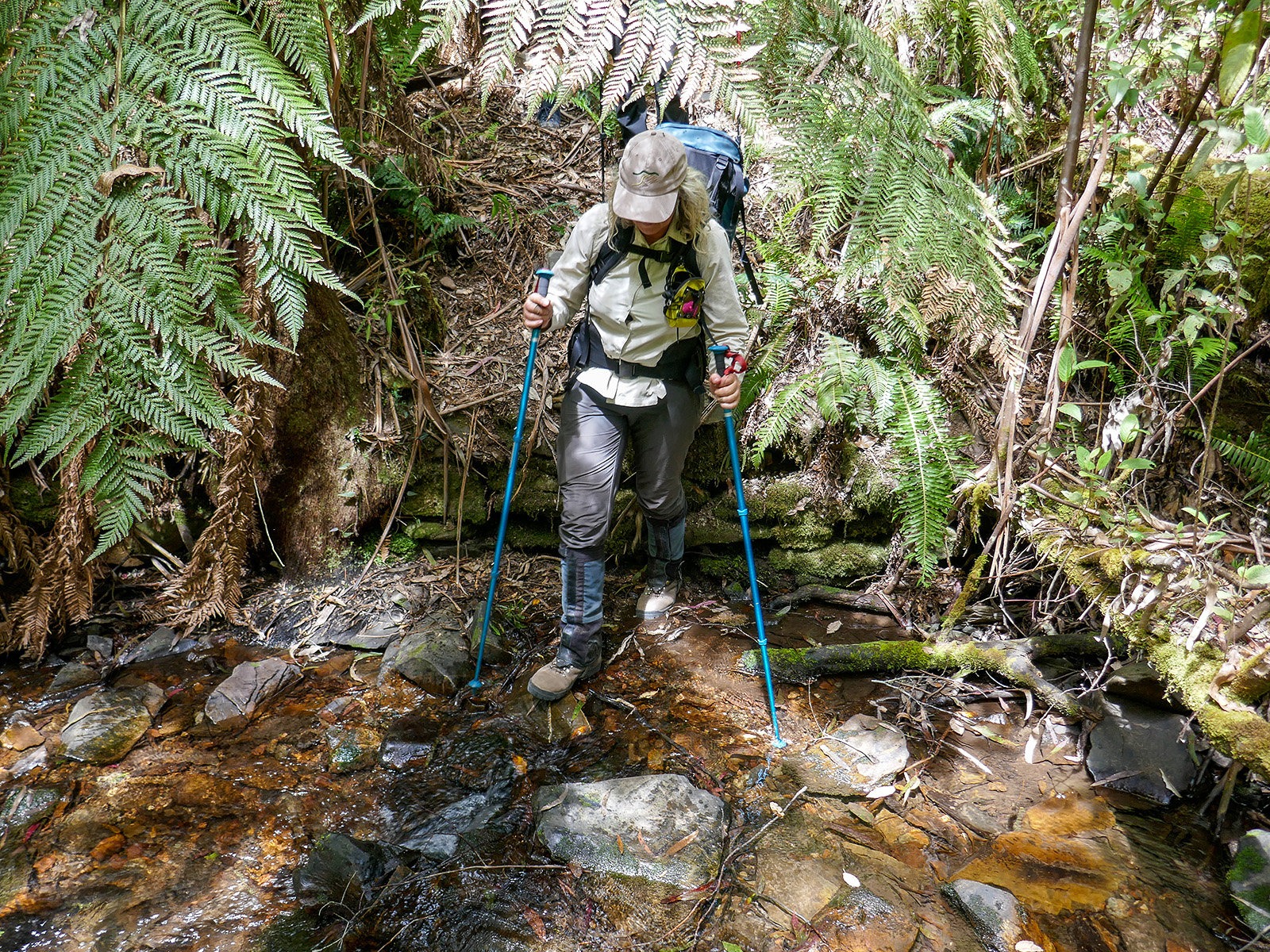Reading Time: < 1 minute
Walking poles, also known as trekking or hiking poles, are now commonly used by bushwalkers. While some bushwalkers disdain them, for most, once tried their value is apparent.
The advantages of walking poles when used correctly include:
- Improved stability and confidence, especially on steep slopes or rough terrain, and when carrying a heavy pack.
- Maintenance of a good walking rhythm
- Reduced stress on the joints and work done by the legs especially when going uphill or downhill, as the arms and shoulders make a contribution to the effort.
Some disadvantages of walking poles are:
- Something else to buy, something else to carry.
- Hands are occupied holding the poles.
- An encumbrance when rock scrambling or in thick scrub, so need to be packed away.
Be careful with walking poles near others
Walking poles, if carelessly used or carried, can result in the tips injuring others or damaging gear. When using poles take care to not walk too close to others, lest the person in front gets a pole tip in their calf or the person behind gets a poke in the shin. If poles are being carried under the arm always have the tips forward and pointed down.
Correct adjustment of poles
Walking poles must be correctly adjusted to be effective. Check with manufacturer’s instructions.
Using a single pole
Some walkers prefer to use a single walking pole, in effect more like a walking stick. This leaves one hand free. It provides some additional support and stability, but without the symmetry of a pole in both hands operating in rhythm with the walking stride, the advantage of walking poles is much reduced.

